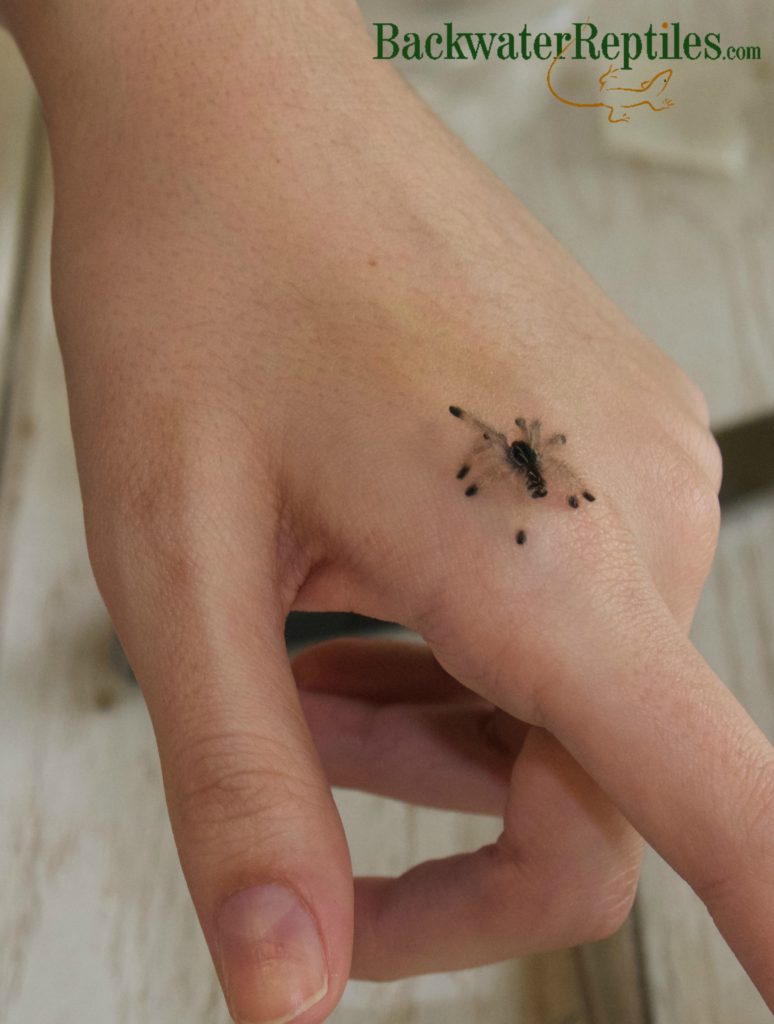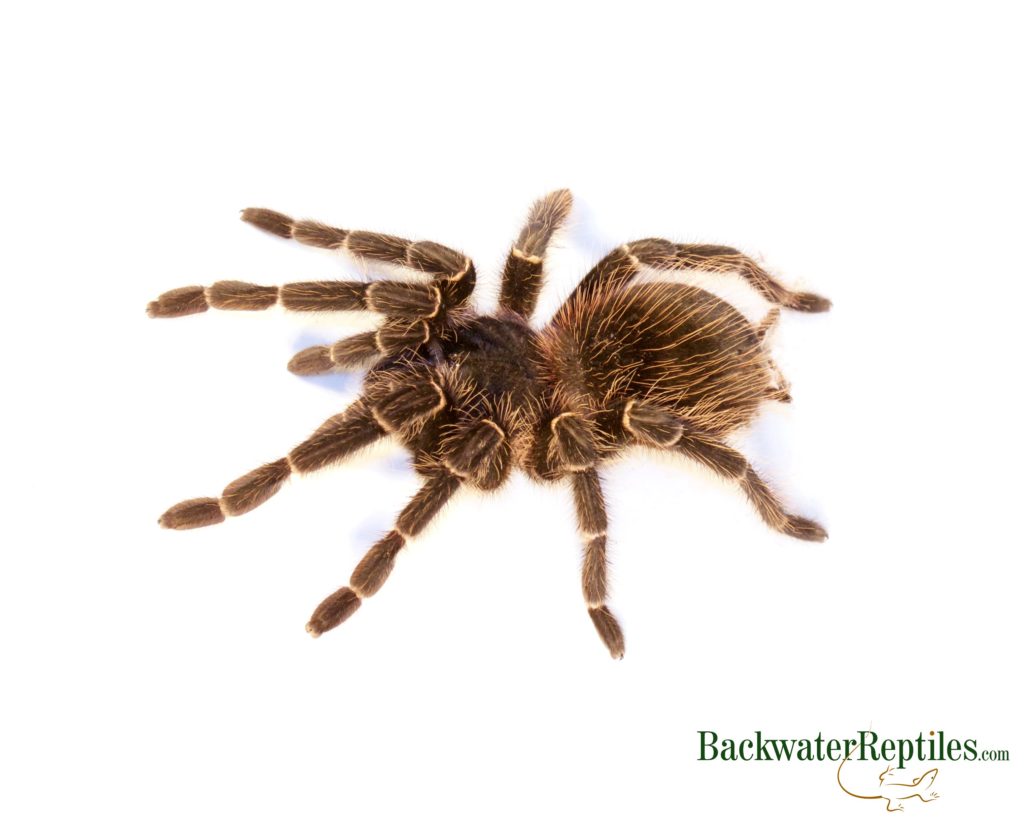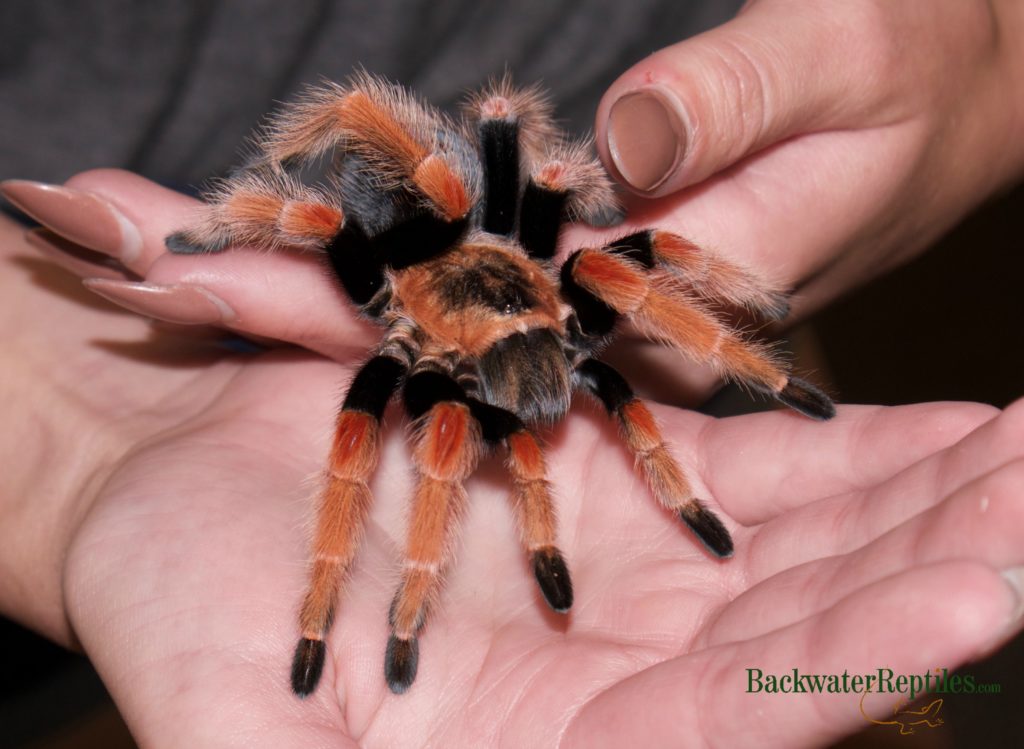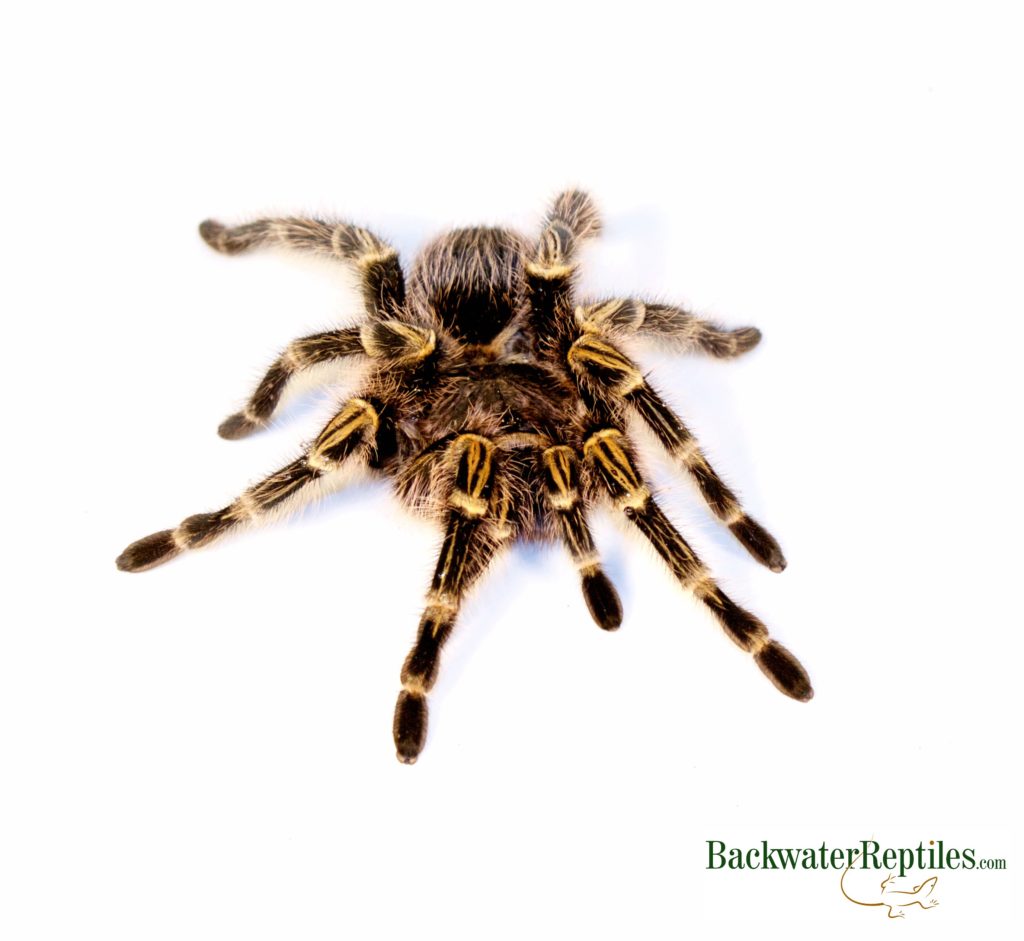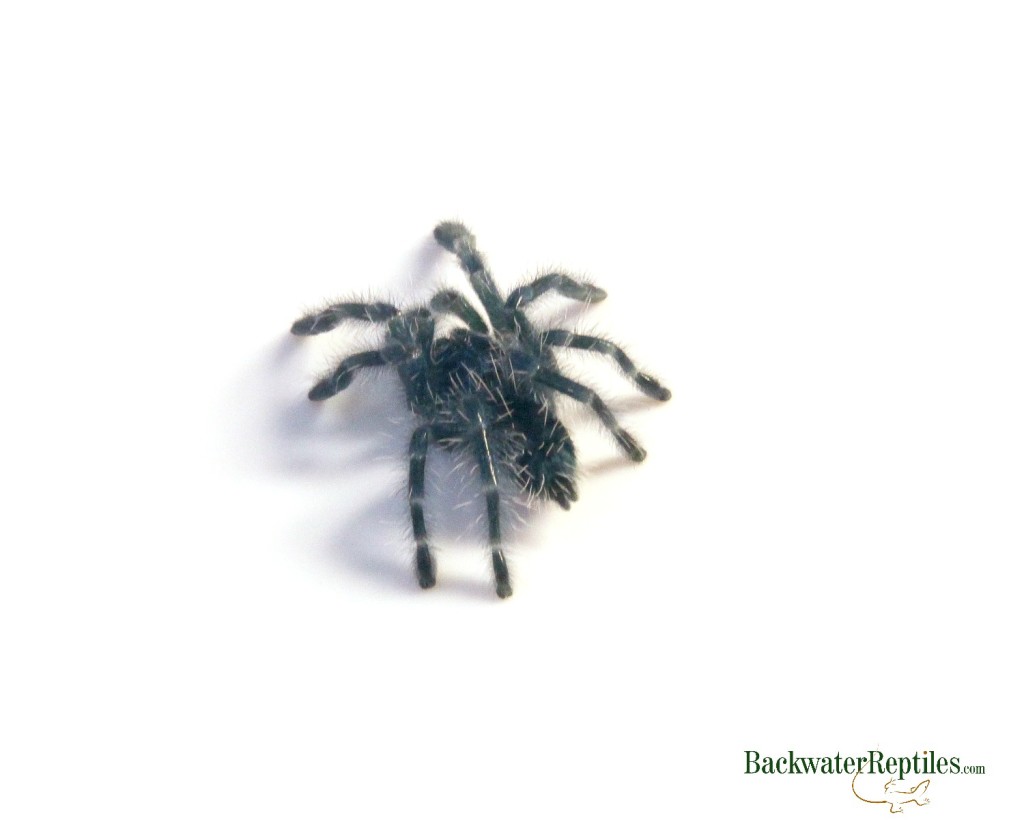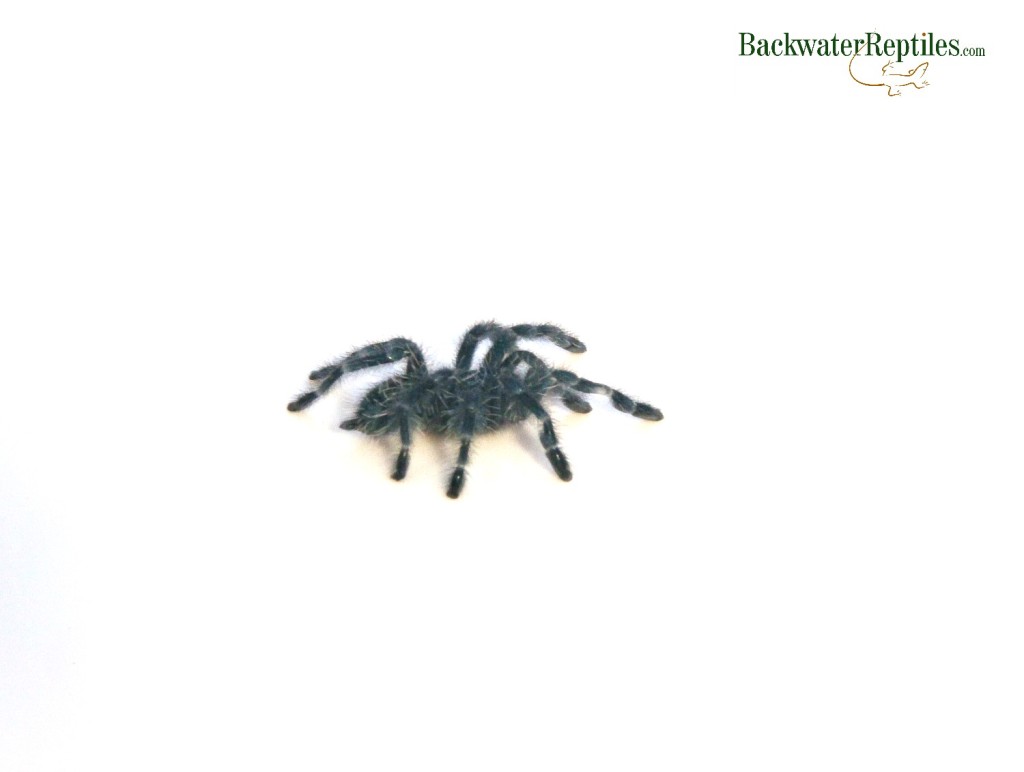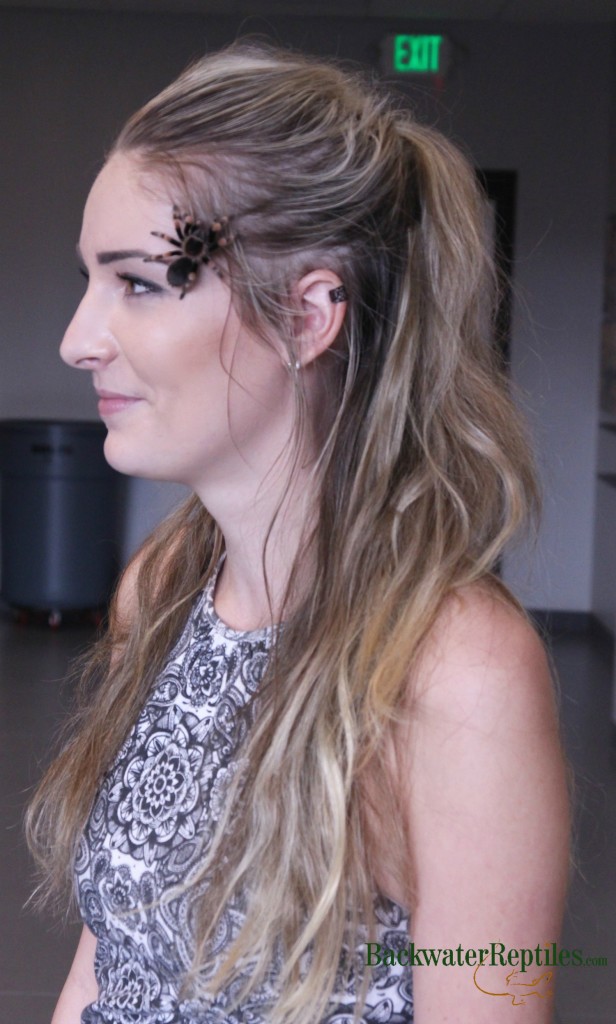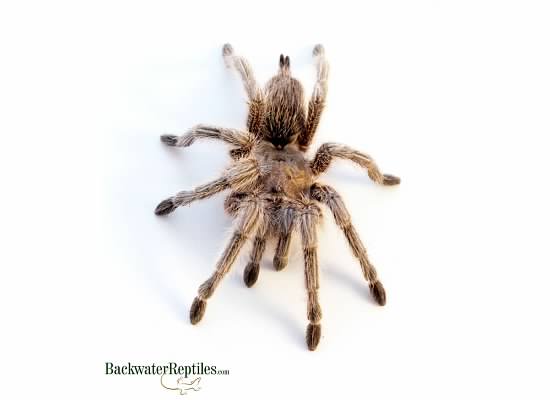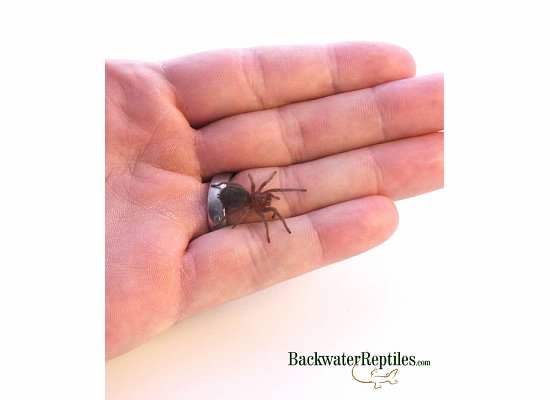Spiders come in all shapes and sizes. This might get you wondering – what are the most colorful pet tarantulas?
There are many species of tarantula available that are safe to keep as pets. Some are larger than others, some are more docile than others and – you guessed it – some are more colorful than others. In this article, we’ll discuss the most colorful species of tarantula commonly kept as pets and give some useful care tips for each kind.
Greenbottle Blue Tarantula (Chromatopelma cyaneopubescens)
One of the main things that gets us excited about keeping this beautiful spider is that they are typically a safe bet for beginners. Maintaining a terrarium that suits them is simple enough given that they prefer dry substrate and moderate temperatures.
Although they are skittish, fast and kind of considered “scaredy cats,” they are lovely to look at once you get past the spiderling phase. After a few molts, their gorgeous colors will begin to appear and you can watch the magic continue to unfold as you raise your tarantula.
If you are interested in a tarantula with blue or teal-colored legs and a bold, rusty-orange red abdomen, then Backwater Reptiles has got you covered! Keep in mind that we typically offer juveniles of this species, so you will be able to enjoy watching your tiny little one grow and color-up.

Mexican Fireleg Tarantula (Brachypelma boehmei)
This colorful terrestrial species is known for being very docile and grows to have a leg span between 5 to 6 inches at maturity. When fully grown, they display red and black/very dark brown coloration with their legs being particularly bright.
Here’s a fun fact about this species: females can live around 25 years in captivity, whereas males are known to live around six or seven.
Although Mexican Firelegs are best kept by intermediate level hobbyists, many consider them to be one of the more docile species of tarantula. In our experience, this can vary as some can be prone to flick urticating hairs while others are calm around people. It all depends upon the individual spider and the attention that the handler pays to the spider’s body language.
This is a popular display species because they actually do spend quite a bit of time outside of their burrow. This means that you can usually watch them eat, drink and molt without them feeling distress.
If you are interested in a Mexican Fireleg taratula, Backwater Reptiles can help you out. We sell a range of sizes of this particular spider, so you can choose a baby and watch it grow or an adult that is already sexed and displaying lovely colors.
Here’s a picture of one of our employees handling one of the larger fireleg sizes we offer.

Gooty Sapphire Ornamental Tarantula (Poecilotheria metallica)
The Gooty Sapphire is probably the most sought after tarantula species. As its name suggests, the gooty is a dazzling blue spider with yellow accents. It is also called the peacock parachute spider for its ability to catch prey mid-flight.
This is an exceedingly colorful tarantula that does well in captivity. Because of its heftier price point, rarity and supply and demand, we advise that you do a lot of research and prepare your habitat accordingly.
The basic things to note when obtaining a Gooty Sapphire are:
- This is an arboreal species and should therefore have an arboreal set up. This means your enclosure needs to be taller rather than longer. Height is important.
- This species grows fast! If you acquire a spiderling, be prepared for it to eat, molt and mature quickly.
- This is considered an ornamental and display species. It is best left to its own devices and they typically don’t enjoy being held.
If you are interested in buying a gooty sapphire sling, you can visit Backwater Reptiles to do so. The bluish colors begin to show after just a few molts.
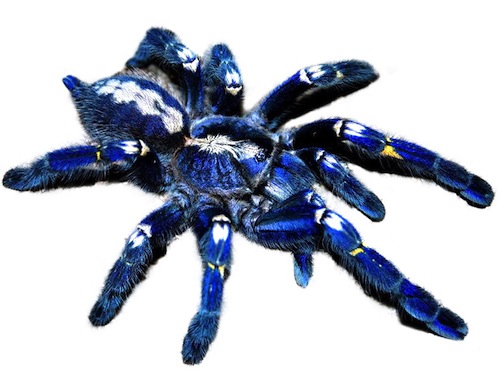
Purple Pink Toe Tarantula (Avicularia purpurea)
As you might be able to surmise, the Purple Pink Toe Tarantula is know for its purple sheen. When you see the semi-iridescent nature of the purple, you will understand why this spider is on our list of the most colorful pet tarantulas.
Purple pink toes, while colorful, are known to be on the smaller side. They usually don’t exceed legspans of 4-5 inches. Females have been known to live 12 years or so in captivity, while males typically reach around 5-6 years old.
This is an arboreal species. We’d also like to mention that they are excellent climbers and as such, they are excellent escape artists. If you are planning on buying this species, make sure you have an enclosure with a secure top! Spiderlings are especially notorious for “going missing.”
We recommend this species for intermediate-level tarantula owners. It’s propensity for escaping and its speed make it a spider that requires at least a modicum of experience.
Purchase your own gorgeous purple pink toe tarantula sling here. Please note that baby spiders (spiderlings) of this species do not typically possess the shiny purple sheen that their juveniles and adult counterparts do. It can take several molt cycles for this coloring to appear.

Antilles Pink Toe Tarantula (Avicularia versicolor)
This species of spider actually has several different common names including the Martinique Pink toe and the Martinique Red Tree Spider. It hails from the Caribbean, Martinique and Lesser Antilles. When it is mature, it has a pink or red abdomen and legs with a greenish blue head. It is quite a strong contender in the most colorful pet spider competition.
It should be noted that this arboreal species needs very good ventilation in its enclosure in order to thrive. While humidity is important to its health, it cannot live in conditions that are overly wet or misty. Make sure that proper airflow can be achieved. The good news is that this is a “room temperature” spider, meaning that if you are comfortable with the temperature, your spider should be too.
A word of caution: this is not an overly timid, shy or fearful species of colorful tarantula. While they make excellent display pets, they are very prone to jumping. If you open the spider’s enclosure to mist or feed, be aware of where your spider is at all times. They have been known to jump out onto owners unexpectedly which can be startling and potentially harmful to all parties involved if the response is panic.

Conclusion
While there are many species of colorful tarantulas, we’ve covered the most popular ones in this article. All of the spiders we discussed tend to display colors other than brown, black or grey and are highly sought after by hobbyists for display pets.
One thing that is important to keep in mind when buying a spiderling tarantula of any species is that baby spiders do not look like their adult counterparts. As we’ve mentioned, it takes many molts and some time to mature before the brilliant colors are displayed.
If you are interested in purchasing any of the tarantulas listed above, Backwater Reptiles has got you covered! Check out our list of spiders for sale and discover the tarantula that speaks to you.





